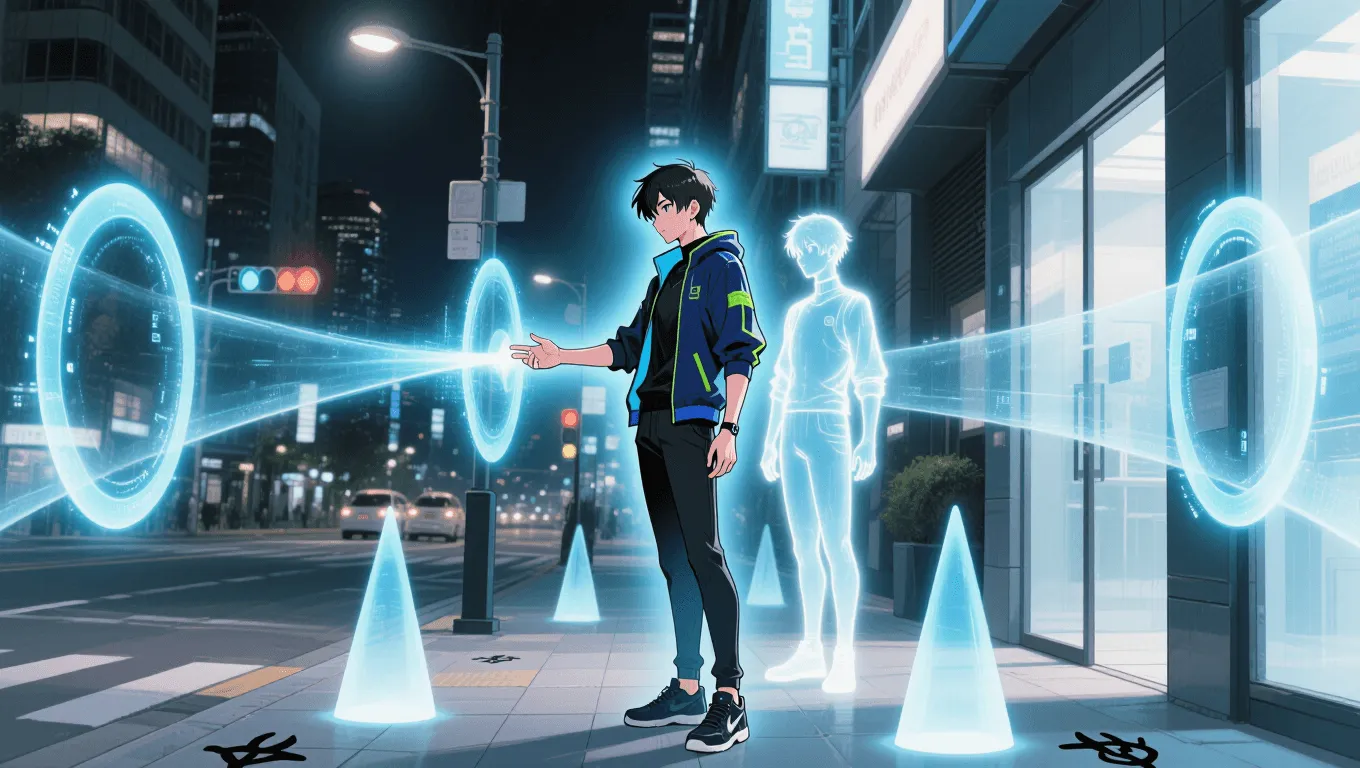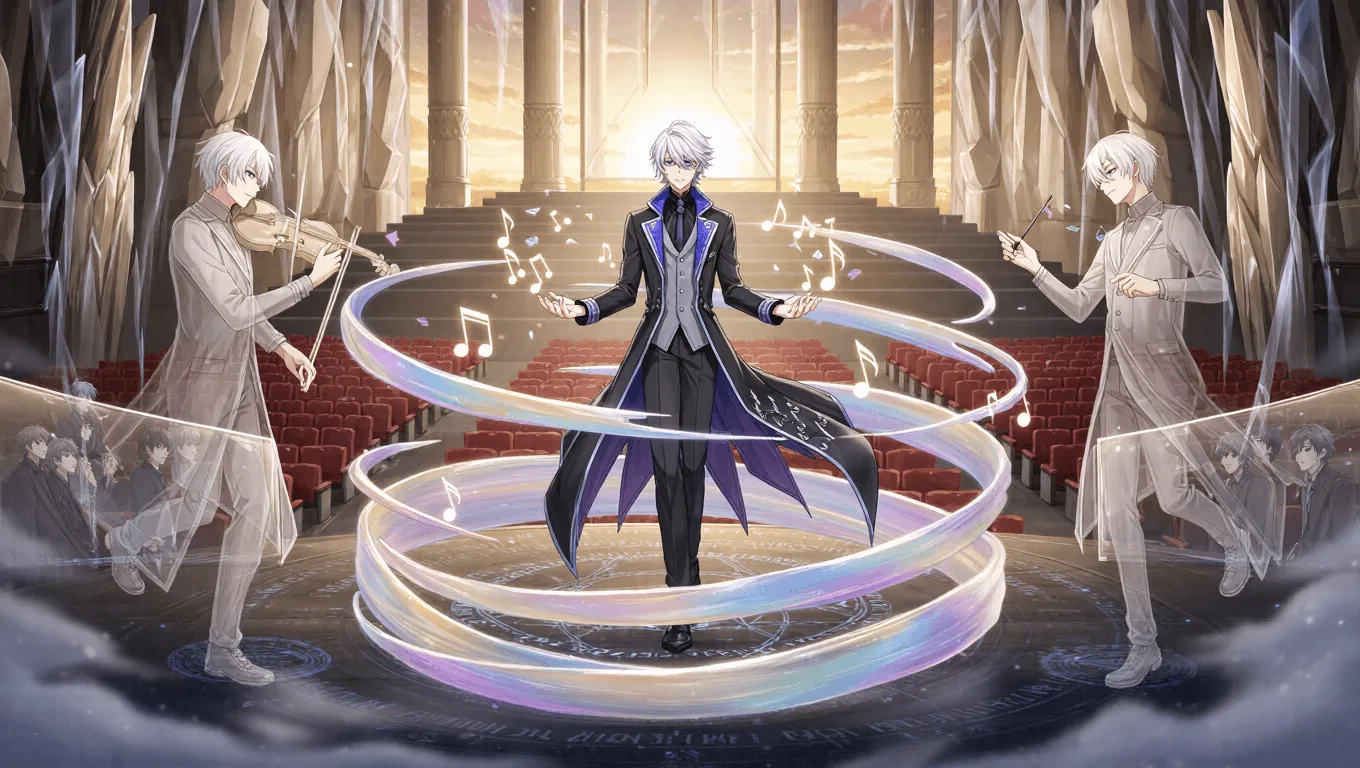What Is Etherial Elegy

Etherial Elegy Video Demo 🎬
Table of Contents
Etherial Elegy is a sound-centric, spirit-tinged superpower where vocalized tones or instrument-like resonance produce spectral effects. Wielders shape “ghost song” into tangible phenomena—calming allies, disrupting enemies, and phasing through matter via harmonic frequencies. In plain terms, it turns music and voice into a toolset of spectral resonance, psychic acoustics, and controlled vibrations that blur the line between sonic manipulation and phantom energy.
In many settings, Etherial Elegy is classified alongside sonic manipulation, resonance control, and emotion-linked aura powers. It excels at area influence, subtle debuffs, and battlefield tempo control, while retaining precision options like targeted dissonance or protective lullabies. Players building characters with this ability often explore themes of memory, mourning, and echoes—hence “Elegy.” For more powers like this, browse the full list of superpowers or try a new idea with the random superpower generator.
Core Abilities of Etherial Elegy
Resonant Phantasm
Users project haunting overtones that condense into semi-visible spectral echoes. These “phantasms” can distract foes, mark positions, or relay simple actions. They’re not full illusions; they’re resonance imprints that shimmer and fade, useful for drawing fire or creating short-lived decoys.
Lament Field
A controllable aura of low, mournful frequencies softens hostile intent, dulls aggression, and saps stamina. Mechanically, this acts as crowd debuff: reduced accuracy, slowed movement, or shorter dash ranges. The Lament Field can also dampen explosions or shrapnel trajectories by interfering with kinetic vibrations at close range.
Soul-Tuned Harmonics
By keying notes to emotional spectra—grief, resolve, courage—the user can stabilize allies (lower fear, steady aim) or agitate enemies (surface doubts, heighten dread). This is not mind control; it’s affective modulation using psychoacoustic triggers. In RPG terms, grant small buffs to will saves, concentration checks, or cooldown recovery.
Echo-Phase Shift
Holding a sustained overtone lets the body “slip” across micro-gaps in matter, achieving brief intangibility or low-grade phasing. It’s line-limited—doors, thin walls, some restraints—but not heavy fortifications. The longer the tone, the higher the risk of dissonant backlash (see Limitations).
Mourning Chorus
Layered harmonics create a chorus effect that splits a single action into multiple micro-effects: several tiny pushes, several small blinds, or repeated stagger pulses. Think of it as multi-hit sound waves, each weaker than a single blast but excellent for interrupting casts or keeping enemies off balance.
Silence Requiem
A controlled null tone that cancels nearby frequencies. This can erase footstep sounds, mute gunfire in a pinch, or shut down enemy sonic attacks. Against casters or tech dependent on vocal commands, Silence Requiem forces them into fallback methods.
Dirgebound Mark
A “tag” of spectral resonance placed by a short melodic phrase. Marked targets carry a faint echo the user can ping—granting soft tracking, range estimation, or increased susceptibility to subsequent harmonics. Requires line-of-sight to apply and decays over time.
Application / Tactical Advantages in Combat
Zone Control and Crowd Management
Etherial Elegy excels at battlefield shaping. A Lament Field denies space by taxing stamina and accuracy, while Mourning Chorus interrupts rushdowns and channeling. Resonant Phantasm provides safe scouting or baiting angles. Together, they slow enemy tempo and give allies comfortable engagement windows.
Stealth and Counter-Intel
Silence Requiem muffles team movement and sabotages sound-sensitive alarms. A careful chorus can also overwrite voiceprint locks with harmonically matched tones. Dirgebound Mark lets the user keep a soft lock on retreating threats without loud reveals.
Anti-Caster and Anti-Coordination
Sonic necromancy—using “ghost song” to touch memory and morale—disrupts call-outs, timing, and rituals. Brief Echo-Phase Shift bypasses simple barriers to break concentration lines. Combined with micro-stagger pulses, the power is a nightmare for glass-cannon mages or anyone reliant on uninterrupted chants.
Team Support and Sustain
Soul-Tuned Harmonics offers steady, low-cost buffs: calmer aim, steadier breathing, improved resolve under suppression. When fights go long, these small percent gains stack into significant advantage. Etherial Elegy doesn’t out-heal a dedicated medic, but it can prevent tilt, panic, and misfires.
Level: Level 1 🏙️, Level 2 🌇, Level 3 🌃
Level 1 🏙️ — Street-Side Soloist

-
Range & Output: 8–12 meters effective aura; moderate volume, brief bursts.
-
Toolkit: Basic Lament Field (minor debuff), single Resonant Phantasm, short Silence Requiem (cone), limited Dirgebound Mark.
-
Playstyle: Defensive support with occasional disruption. Can mask steps for a small squad and interrupt one channel at a time.
-
Narrative Flavor: The voice feels “cold” on long notes; nearby windows hum softly when the power is active.
Level 2 🌇 — Concert Hall Controller

-
Range & Output: 20–30 meters; sustained auras and layered effects.
-
Toolkit: Strengthened Lament Field (stacking debuffs), dual Phantasms, Mourning Chorus (multi-hit stagger), reliable Dirgebound Mark, short-range Echo-Phase Shift through thin barriers.
-
Playstyle: Full zone control. Can lock down corridors, split enemy pushes, and keep snipers jittery.
-
Narrative Flavor: Air ripples around crescendos; allies report “memories surfacing and settling,” gaining clarity mid-fight.
Level 3 🌃 — Night-Stage Maestro

-
Range & Output: 50+ meters with fine control; concert-grade projection or pin-drop precision.
-
Toolkit: Wide-area Lament Field, chain-tagging with Dirgebound Mark, advanced Echo-Phase Shift (short, high-risk phasing through dense matter), Silence Requiem domes, and chorus-stacked interrupts.
-
Playstyle: Battlefield architect. Sets the tempo for entire encounters, breaks rituals, chokes supply routes of comms, and opens flanking paths by muting alarms.
-
Narrative Flavor: On a held note, lights dim slightly; distant surfaces bloom with frost-like patterns from sub-audible vibrations.
Limitations of Using the Etherial Elegy
-
Breath and Stamina Dependency: Long phrases demand lung capacity and diaphragm control. Damage to throat or ribs drastically reduces output until treated.
-
Medium Reliance: Etherial Elegy travels best through air. Heavy wind, vacuum, or complex sound-baffling architecture reduces effectiveness. Underwater use is erratic unless the user has trained aquatic resonance.
-
Dissonant Backlash: Overlapping too many harmonics risks feedback—nosebleeds, vertigo, or temporary aphonia. Echo-Phase Shift failures can leave parts of gear momentarily “out of phase,” risking damage.
-
Emotional Echo: Because Soul-Tuned Harmonics touches affective states, the user may absorb a trace of nearby grief or fear. Without mental techniques, this can cause hesitation or mood crashes post-battle.
-
Line-of-Sight Tagging: Dirgebound Mark is easiest to apply when the target is seen and heard. Thick barriers prevent application; complete silence fields block it outright.
-
Legal/Environmental Concerns: High-decibel passages can shatter glass, spook civilians, and trip acoustic sensors. Using Silence Requiem around emergency services may inadvertently block critical alarms.
Weakness Against What Other Superpowers
-
Sound Nullification / Sonic Dampening: Hard counters Etherial Elegy’s projections and can erase auras mid-cast.
-
Vibration Absorption or Seismic Control: Converts or grounds the user’s waves, turning attacks into harmless heat or redirecting them.
-
Vacuum or Air Deprivation Fields: Remove the medium entirely, gutting range and damage.
-
Emotionless or Mind-Shielded Targets: Diminish Soul-Tuned Harmonics; constructs, drones, or disciplined psionics ignore morale effects.
-
Mirror Resonance (Reflective Barriers): Reflective crystals, harmonic shields, or certain light-solid constructs can bounce waves back, risking feedback.
-
Overwhelming AoE Blasts: While the user excels at control, raw, instant damage (meteor strikes, rail-cannon beams) can punch through before a chorus ramps up.
Synergistic Power Combos
-
Mystic Mirage + Etherial Elegy: Layer illusions with spectral audio cues so visuals feel “weighted.” Mirage distracts the eye; Elegy convinces the ear—devastating for ambushes.
-
Astral Aegis + Etherial Elegy: Shielding stabilizes the user during long notes, prevents backlash, and lets Echo-Phase Shift operate safely in hostile zones.
-
Chrono Synchrony + Etherial Elegy: Micro-time windows let choruses stack perfectly, turning stagger pulses into near-stuns while extending Silence Requiem uptime.
-
Spectral Surge + Etherial Elegy: Surge amplifies the phantom component, granting more tangible Phantasms that can parry or body-block briefly.
-
Vortex Vesper + Etherial Elegy: Wind control shapes sound paths, enabling curved shots, whisper relays around corners, and protected channels through storm noise.
-
Apex Aegis (Leadership Buffs) + Etherial Elegy: Teamwide discipline plus emotional tuning produces remarkable accuracy and morale under siege.
Known Users
-
Operatic vigilantes and sonic casters in many settings draw inspiration from classic comic characters who weaponize voice. For reference on sonic archetypes, see Black Canary (noted for supersonic screams) or Banshee (aerial maneuvering via sonic flight). These characters don’t use Etherial Elegy specifically, but they illustrate tactics—crowd control, comm disruption, and precision shatter—that parallel this power’s core playbook.
-
Choir-trained exorcists in occult campaigns are common narrative users: they chant elegies to reveal lurking phantoms or soothe haunted spaces before combat.
-
Urban bards and street-level defenders leverage busker gear—contact mics, loopers—to layer Mourning Chorus on the fly, transforming alleys and subway platforms into controlled sound stages.
If you’re exploring character creation or balancing encounters, compare Etherial Elegy with neighboring abilities in the superpower wiki or spin up a fresh concept using the random superpower generator.
